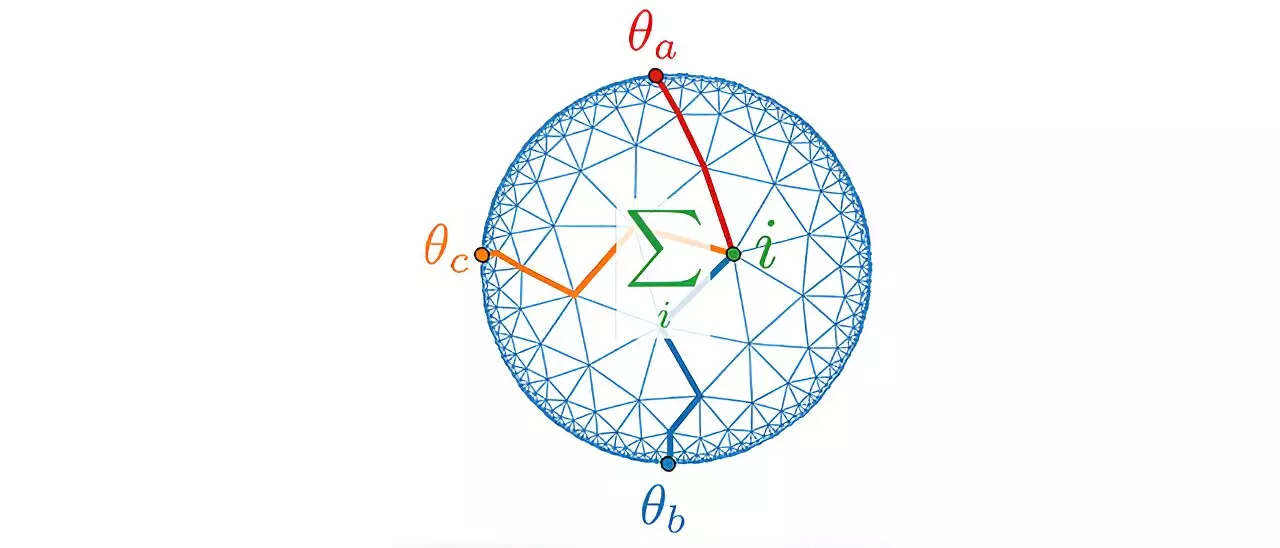Gravity, one of the most fundamental forces in the universe, has historically been a subject of intrigue and exploration for scientists. Our comprehension of gravity at macroscopic scales—such as the orbits of planets and lunar tides—has reached a sophisticated level, thanks to advancements in both theoretical and experimental physics. Researchers can now accurately model gravitational interactions across vast distances, propelling rockets into space and predicting celestial movements with remarkable precision. Nonetheless, when we delve into the quantum realm, where particles interact at infinitesimally small scales, the conventional laws of gravity appear inadequate.
Professor Johanna Erdmenger, a prominent figure in theoretical physics at the University of Würzburg, emphasizes that while the classical view of gravity remains robust in many contexts, significant gaps exist in our understanding—particularly in phenomena such as black holes and the origins of the universe. “To explain the Big Bang or the interior of black holes, we must grasp the quantum attributes of gravity,” she asserts, advocating for the necessity of new theories that can bridge the gap between general relativity and quantum mechanics.
At the forefront of this theoretical endeavor is the AdS/CFT correspondence, a cornerstone concept of quantum gravity theory. This intricate relationship posits that the complexities of gravitational theories in a high-dimensional framework can be effectively rendered by simpler quantum theories at the boundary of that framework. Anti-de-Sitter space, denoted as AdS, represents a unique form of spacetime that curves inward, creating a hyperbolic structure. Conversely, CFT, or conformal field theory, exemplifies a system where quantum characteristics remain uniform across varying spatial dimensions.
While initially seeming esoteric, Professor Erdmenger explains that this correspondence allows for the simplification of complex gravitational processes into more manageable mathematical models. A useful analogy she provides is the imagery of a funnel: gravitational dynamics trapped within the funnel’s confines correlate with the simpler dynamics at its rim. This relationship is akin to a holographic projection, where three-dimensional images can emerge from a two-dimensional representation.
In her latest research efforts, Professor Erdmenger and her team have developed an innovative approach to experimentally verify the long-debated AdS/CFT correspondence. By employing an intricately designed electrical circuit as a simulation of curved spacetime, the researchers mapped the dynamics of electrical signals at various junctions within the circuit, paralleling gravitational behavior in diverse spatiotemporal contexts. Their findings, documented in the journal Physical Review Letters, illustrate that the circuit could potentially display a congruity between the edge and the inner workings of a simulated spacetime—providing empirical evidence for a core prediction of the correspondence.
This breakthrough not only enriches the landscape of gravitational research but could also spur technological advancements. The engineered circuits may lead to novel applications in quantum technology, optimizing the transmission of electrical signals with diminished losses. Erdmenger anticipates that the simulated curvature of space will enhance signal stability and efficiency, thereby pushing the boundaries of what is possible in information transmission.
The synthesis of classical and quantum mechanics represents one of the most ambitious quests in modern physics. As researchers like Professor Erdmenger forge pathways towards a comprehensive understanding of gravity at all scales, the implications stretch far beyond theoretical musings. The integration of new models and experimental observations not only promises to illuminate our understanding of the universe’s genesis and fabric but also holds profound potentials in technological realms. As we inch closer to unraveling the mystery of gravity, humanity stands on the precipice of discovery, ready to explore a universe shaped by the intricate dance of quantum and gravitational forces.


Leave a Reply